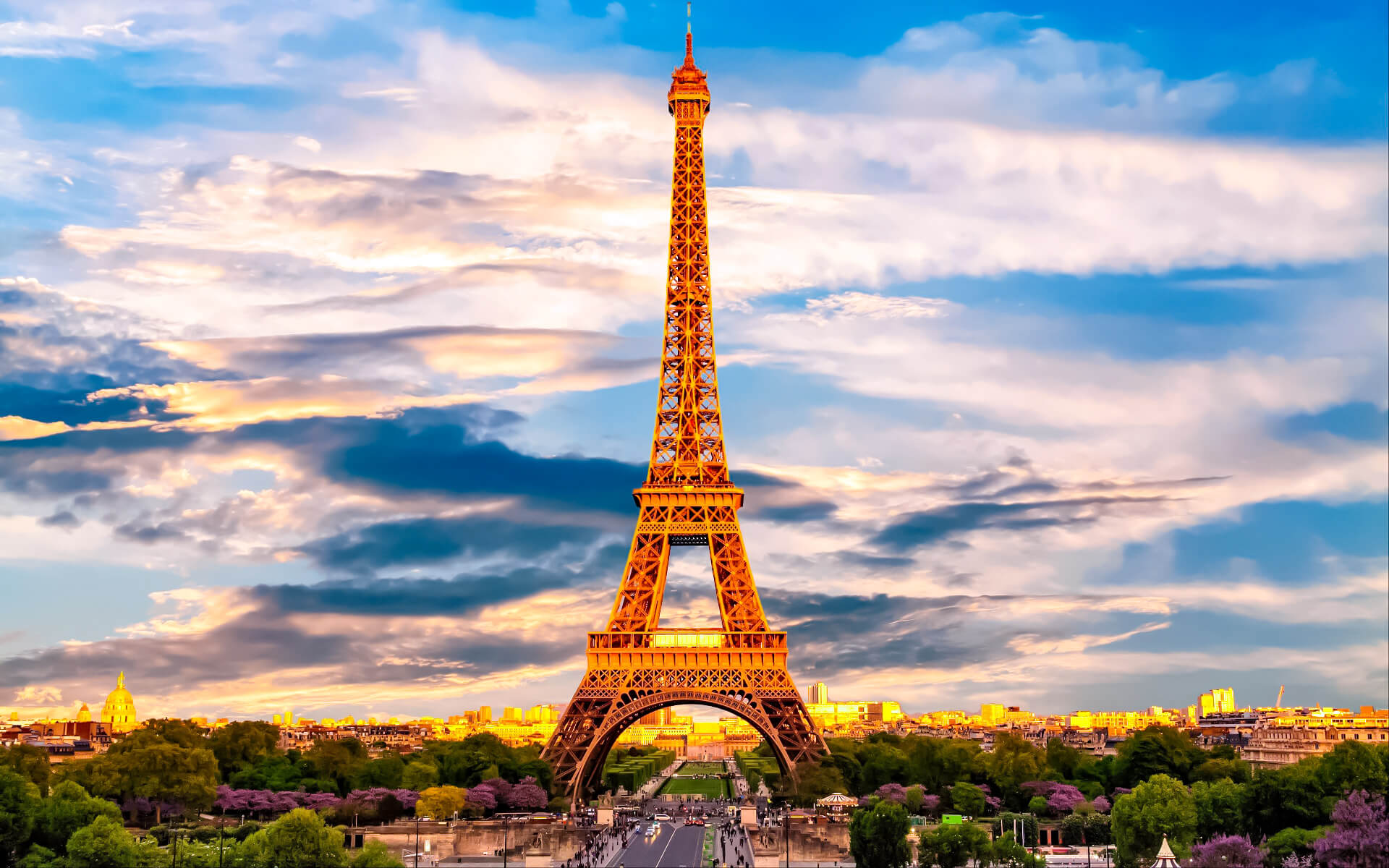Paris, France’s cosmopolitan capital, is one of Europe’s greatest agglomerations, with 2.2 million people living in the compact (105 km2) core city and about 12 million in the metropolitan region. Paris, located in the north of the nation on the Seine River, has the reputation of being the most beautiful and romantic of all cities, bursting with historic connotations and remains enormously important in the fields of culture, art, fashion, gastronomy, and design. It is known as the City of Light (la Ville Lumière) and the Capital of Fashion, and it is home to some of the world’s most luxury fashion designers and cosmetics, including Chanel, Christian Dior, Yves Saint-Laurent, Guerlain, Lancôme, L’Oréal, and Clarins.
Grand Paris (the City and three surrounding districts) had 22.2 million tourists in 2015, a 1.1 percent reduction from 2014, owing to two series of fatal terrorist incidents. The United States (1.8 million, a 3.6 percent decrease from 2014), the United Kingdom (1.08 million), Germany (725,000), Italy (622,000), and Spain received the greatest number of international visitors in 2015. (609,000). Arrivals from Russia (211,000) were down 37% from 2014. Arrivals from the rest of Europe totaled 1 million, a 4.9 percent decrease from 2014. 746,00 visitors came from China, a 40% increase over 2015; 481,000 came from Japan, a 23% decrease over 2015. Arrivals from the Near and Middle East increased by 0.7 percent to 535,000. Arrivals from the Americas outside the United States were 910,000, a 4.9 percent decrease from 2014; 395,000 from Africa, a 6.5 percent rise from 2014; and 1,065,000 from Asia and Oceania excluding China and Japan, a 14.6 percent increase from 2014.
According to the MasterCard Global Cities Destination Index, Paris was the third busiest airline destination in the world in 2015, with 16.06 million tourists, after London (18.8 million) and Bangkok (16.06 million) (18.24 million). According to the Paris Convention and Visitors Bureau, tourism-related industries employ 393,008 people in Grand Paris, accounting for 12.4 percent of the total labor force. These industries include hotels, catering, transportation, and leisure.
Monuments And Attractions
In 2015, 74.7 million people visited the city’s museums and monuments, a 7.2 percent decrease from the previous year owing to well reported terrorist incidents. The Notre Dame Cathedral was the city’s most popular tourist attraction in 2015, with 13.6 million visits. In 2015, the Louvre museum had 8.4 million visitors, making it the most visited museum in the world. The Basilique du Sacré-Cour (10 million visits in 2015), the Eiffel Tower (6.917,000 visitors), the Centre Pompidou (3,060,000 people), and the Musée d’Orsay were the other top cultural attractions in Paris (3,439,000 visitors). Disneyland Paris, near Marne-la-Vallée, 32 kilometers (20 miles) east of Paris, was the most visited tourist destination in France in 2015, with 14.8 million visits.
The most visited sites in Paris are situated in the city center, including the Notre Dame Cathedral, the Louvre, and the Sainte-Chapelle; Les Invalides, where Napoleon’s mausoleum is located, and the Eiffel Tower are located on the Left Bank, south-west of the center. Since 1991, the banks of the Seine from the Pont de Sully to the Pont d’Iéna have been designated as a UNESCO World Heritage Site. Other sites are located east to west along Paris’ historic axis, which extends from the Louvre to the Tuileries Garden, the Luxor Column at Place de la Concorde, the Arc de Triomphe, and the Grande Arche de La Défense.
Several additional well-known sites are situated in the city’s outskirts, including the Basilica of St Denis in Seine-Saint-Denis, which is the cradle of Gothic architecture and the royal necropolis of French kings and queens. Three more UNESCO World Heritage sites are located in the Paris region: the Palace of Versailles in the west, the Palace of Fontainebleau in the south, and the medieval fairs site of Provins in the east.
Hotels
As of 2013, the City of Paris has 1,570 hotels with 70,034 rooms, of which 55 were designated five-star, the majority of which belonged to foreign chains and were largely situated between the center and the Champs-Élysées. Paris has always been known for its opulent hotels. The Hotel Meurice, first established in 1817 for British visitors, was one of Paris’s earliest luxury hotels. The coming of railroads and the 1855 Paris Exposition brought the first stream of visitors and the first modern large hotels: the Hôtel du Louvre (now an antiques mart) in 1855, the Grand Hotel (now the Intercontinental LeGrand) in 1862, and the Hôtel Continental in 1878. The Hôtel Ritz on Place Vendôme was the first to open in 1898, followed by the Hôtel Crillon in an 18th-century structure on Place de la Concorde in 1909, the Hotel Bristol on rue de Fabourg Saint-Honoré in 1925, and the Hotel George V in 1928.


